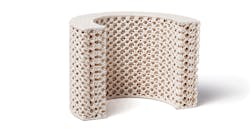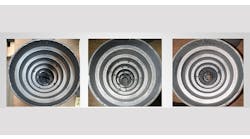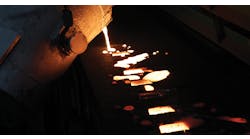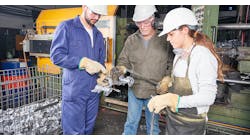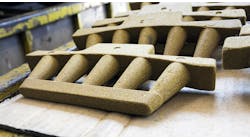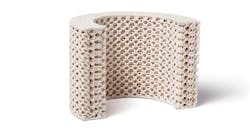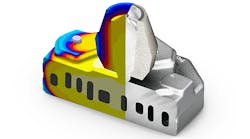Latest from Ask the Expert
Q: Are there better-designed breaker cores that will make riser removal easier? At our foundry we have had a number of safety issues involving individuals’ attempts to remove a riser section. Our current practice is to hit the riser with a sledgehammer, knocking it off the mold surface after cooling. However, sometimes the riser breaks off so easily it causes individuals to be injured. What can be done to help the riser removal process? A: Let’s start with a definition. A riser is a ceramic form built into a mold to act as a "reservoir" for molten metal; it feeds metal to the mold and thus compensates for any shrinkage of the casting during solidification. After cooling, the riser is removed before the casting is unmolded.
There are numerous mechanical methods for removing the riser so that the operator doesn’t have to utilize a sledgehammer, and thereby risk his/her safety. A specialized riser knock-off hammer for instance can be used for this purpose.
Even better, robots can be engineered to remove risers, ensuring workplace safety. Unfortunately, of course, robots represent a considerable capital expenditure for a metalcasting operation, and so they are not always an available option.
Perhaps the most pragmatic choice is to adopt a differently shaped breaker core. A breaker core is a thin ceramic or sand core that is inserted into the riser at the point that the latter is attached to the casting. This core heats quickly during mold filling and solidification, so it prevents early freezing of metal in the riser.
Breaker cores typically have around opening that does not always help facilitate the removal process, as mentioned in the question. There are other shapes available that will not impede the breaker core function but will allow for easier riser removal.
The EXACTCAST™ Star breaker, for example, has multiple points of contact that help to achieve a 50% reduction in force required to remove the riser … which means less time in the impact area. More than that, the riser shape helps to reduce cracks at the contact area after riser removal. This also improves the casting’s surface finish at the contact area, which ultimately reduces rework time. So, with Star breaker cores, the foundry will have a safer work environment, shorter production time, and lower labor costs.
Beyond safety, breaker core design also can determine the reality of a successful casting design. Frequently, castings are engineered for quite specifically for the end-market use, with little or no design consideration given to the overall casting process.
For instance, we’ve seen excellent casting designs experience alloy segregation under their risers. This is because the casting designer did not factor in the breaker design, which in the end is a costly error. The castings ultimately revealed hot tear defects and, so they became scrap. Introducing a star breaker core, fortunately, would remedy the problem. Examples like this demonstrate how important breaker cores can be in the overall success of a casting.
Join the Conversation. Email Your Questions for ASK Chemicals
Share your insights, opinions, and elaborate on the questions and the experts' answer(s). You must be logged in to the website in order to post your comments.
